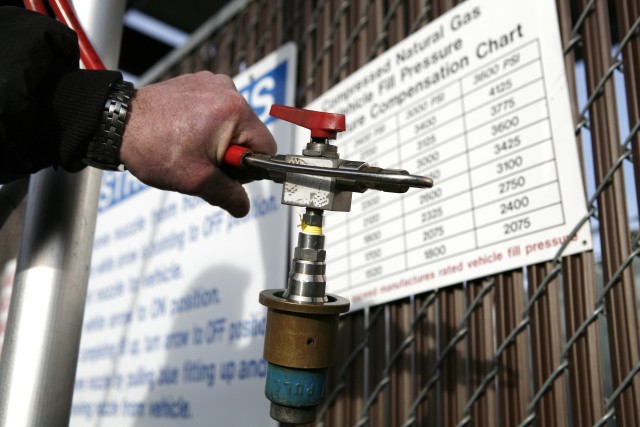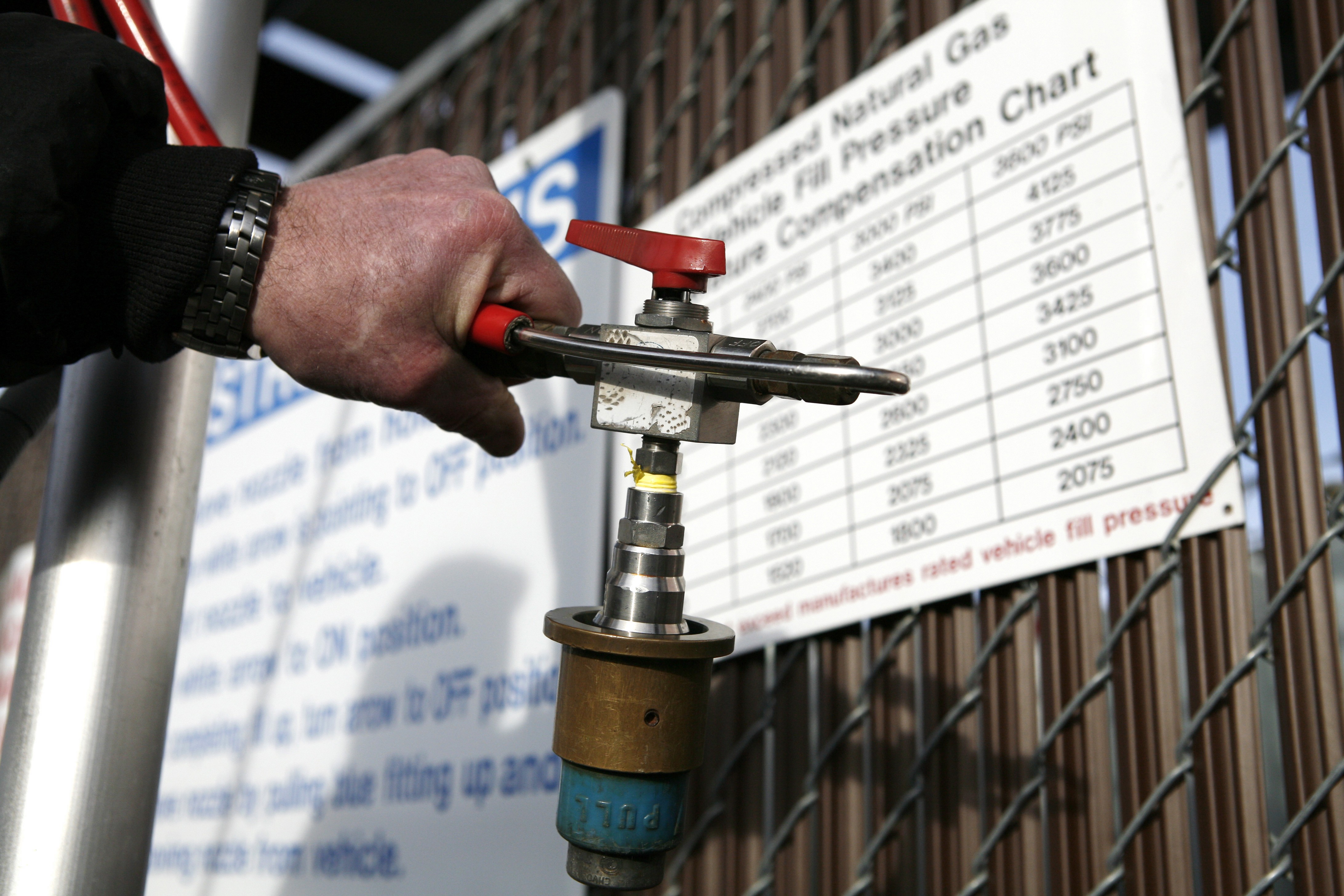FORT LEWIS, Wash. - It burns cleaner and costs much less than regular gasoline or diesel. It's domestically produced and abundant.
And it powers dozens of General Services Administration vehicles on post.
Stumped' It's compressed natural gas, and it's been available for the past few years from a stand-alone pumping station at GSA's Fort Lewis Fleet Center at Building 9791 in the Madigan Annex area.
"We aren't relying on foreign imports in this case," said Gary Bohot, GSA fleet service representative at Fort Lewis. "It's more cost efficient, currently about half the cost of regular gasoline. When regular gasoline was over $4 a gallon six or seven months ago, it was even more cost effective."
As Bohot pointed out, however, the early impetus behind CNG vehicles involved saving the environment. Natural gas engines burn cleaner and produce fewer emissions than those powered by gasoline or diesel.
"Private companies, state and local agencies incorporated CNG vehicles into their fleet years ago, when it didn't make economic sense," Bohot said. "Most are doing it just for the green aspect."
The use of CNG vehicles dovetails with Fort Lewis' goal to dramatically reduce its emissions.
"That's the major goal," Bohot said. "Of course, (the) Army really is pushing to operate as many alternative fuel vehicles as possible, including hybrids, and we're helping them to do just that."
At the peak several years ago, GSA's Fort Lewis fleet included more than 100 "dual-fuel" vehicles that could run on either gasoline or CNG. That number has dwindled to 54. GSA also has two CNG-only vehicles on post.
According to Bohot, the lack of CNG refueling stations available to the public caused manufacturers to cease production of light-duty vehicles in 2005. That accounts for the shrinking number of CNG sedans, pickup trucks and vans in the Fort Lewis fleet as the older CNG vehicles are being replaced.
"The main push right now on natural gas is for the big rigs," said Bohot of manufacturers. "They're switching from diesel fuel to compressed natural gas - a lot more economical for them, a lot better for the environment. It just makes a lot more economic and environmental sense."
Should gas prices drift back above $4 per gallon, CNG could become an even more viable alternative fuel.
"Gas prices fluctuate so much," Bohot said. "Natural gas (moves) maybe two or three cents here, two or three cents there."
And, Bohot noted, the U.S. has an abundance of the fuel.
"They're talking (that) we have at least a hundred years' worth of natural gas left," Bohot said. "There's one company down in California right now that's producing natural gas from methane from ... landfills, which is a totally renewable resource.
"Gasoline, oil from the ground, we just don't know how much is left, and that's definitely on the decrease with an unknown quantity left. CNG use is just one step closer to self-reliance."
Bob Reinert is a reporter with Fort Lewis' Northwest Guardian.


Social Sharing